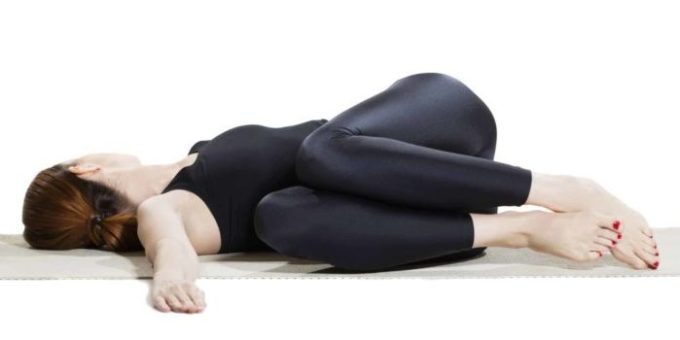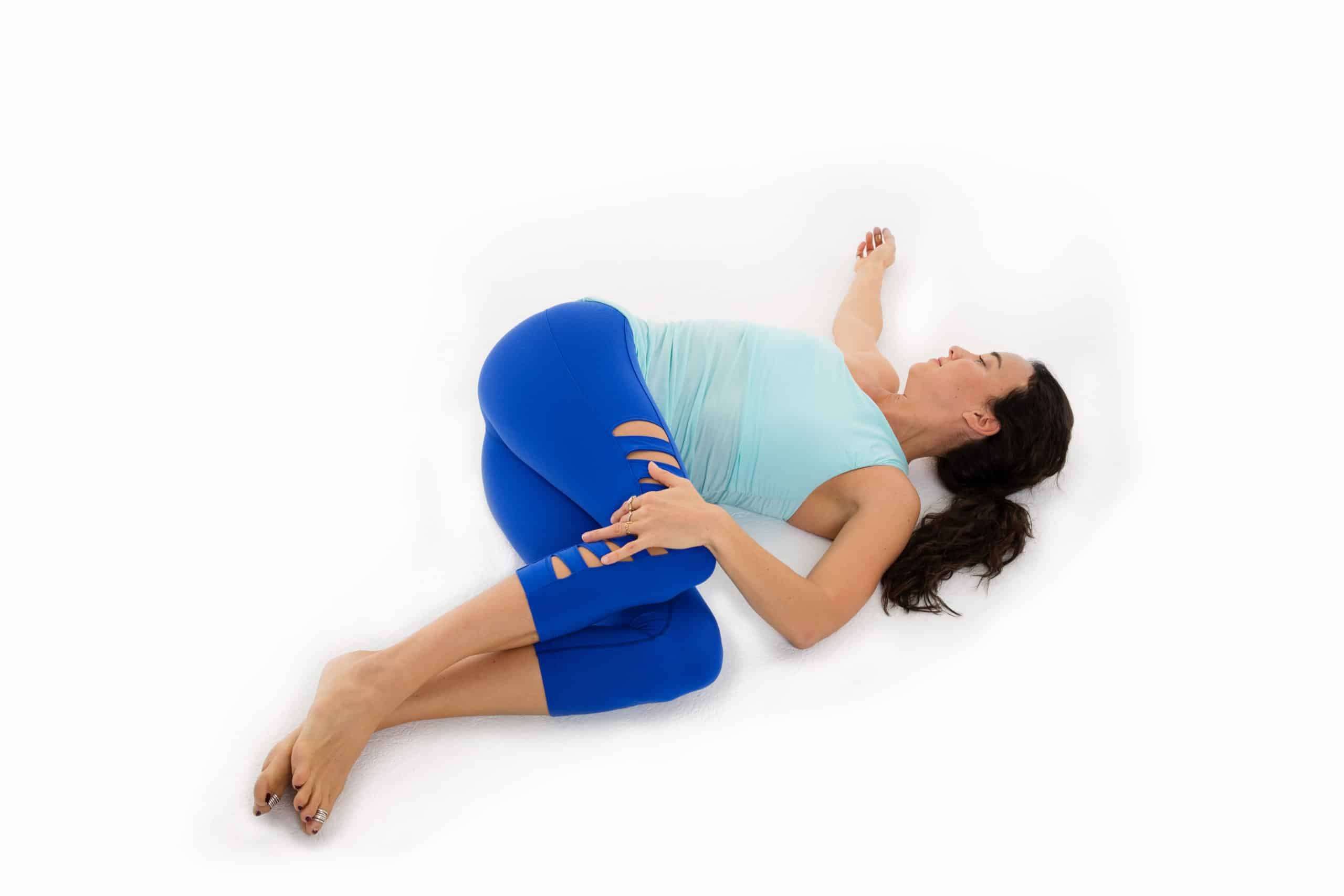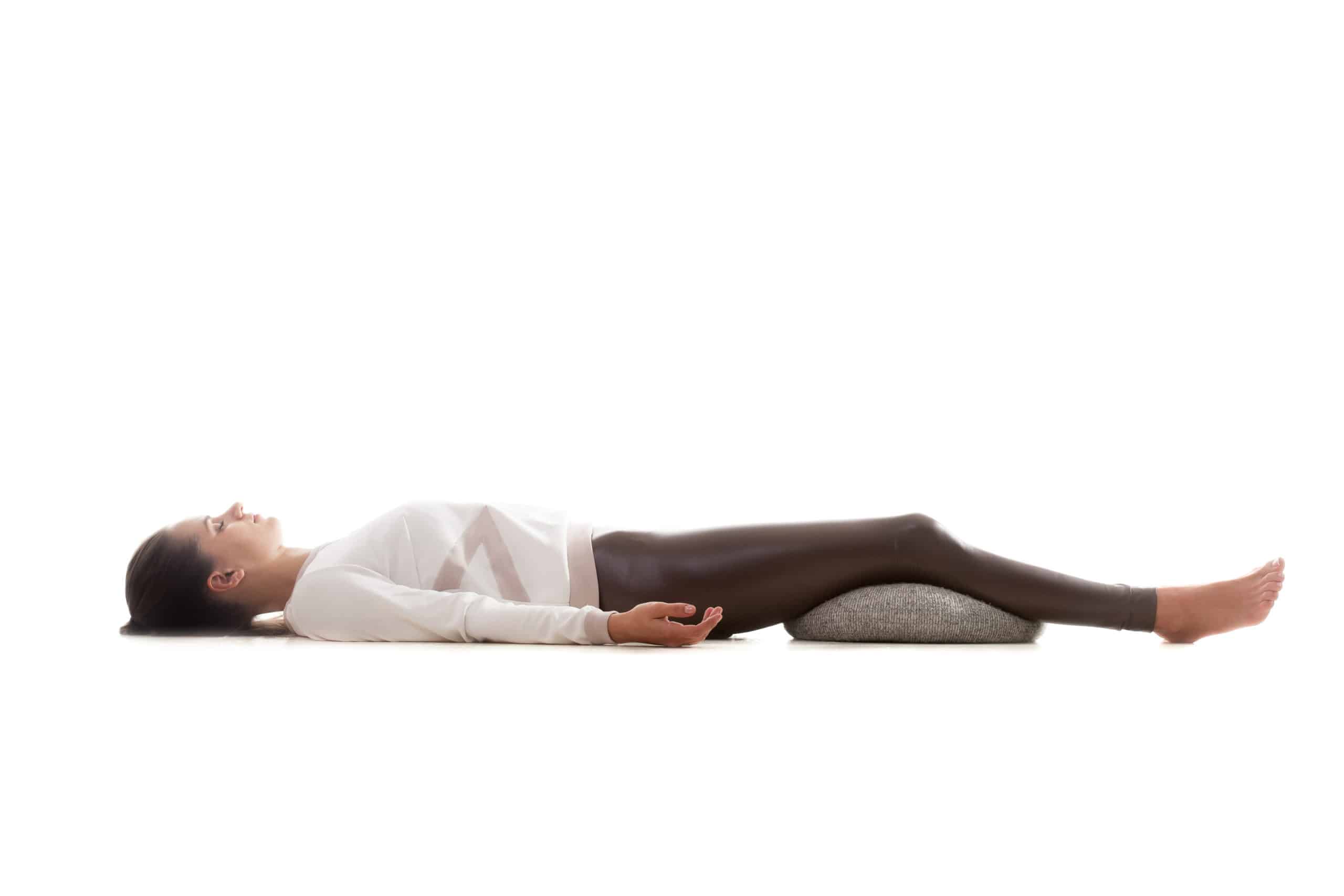Articles, In the Press, Internal Medicine, Resources, Tiffany Cruikshank, Yoga Medicine® News
Yoga for Lymph Flow: A Gentle Practice to Support Your Immune System
By Tiffany Cruikshank for Dr. Axe.
Yoga for lymph flow isn’t a common topic, but with so many superbugs and contagious diseases floating around these days, it’s pretty astounding that one of the most critical components of our immune system — the lymphatic system — is so seldom talked about. The lymphatics, as sort of the passive circulatory system of our immune system, is one of our most potent innate tools offering protection from the daily challenges our internal physiology meets. In addition to nutrition and sleep, yoga can be an effective and accessible tool to maintain a healthy lymphatic and immune system that doesn’t cost a lot of money or require any fancy products.
Why the Lymphatic System Is So Important
The lymphatic system is an essential component of our immune system that helps eliminate toxins and waste from the body. You can think of it as your clean-up crew. Our lymphatics are responsible for transporting waste and toxins out of the tissues back to the bloodstream and regulating the immune response as a local communication mechanism within the tissues. Your lymphatic system creates an essential link for the immune cells to both monitor and respond to signals to increase or decrease immune and inflammatory responses. This also helps protect the body from threats like infections, bacteria and cancer while balancing fluid levels.
The lymph nodes and vessels create a loose sort of webbing throughout the body, providing this vital immune support to every part. Lymph nodes are like little immune hubs found all over the body, but there are three areas that are most influential in mounting an immune response to foreign invaders that we can target in a yoga practice — the neck, armpit and abdomen.
The first two areas contain lymph nodes right under the skin, whereas the abdomen houses deeper lymph nodes throughout the digestive tract. These lymph nodes are important to help trap pathogens so the immune system can promote a defense response. However, research suggests that lymphatic flow is also an important part of a healthy immune response.
How Yoga for Lymph Support Works
An intelligently created system, the superficial lymph nodes are strategically congregated around the joints to allow the changes in pressure with movement to facilitate lymphatic flow through the nodes, bathing them in immune cells. The lymphatic system depends on this changing pressure to pump lymphatic fluid through the system with valves that keep fluids moving in one direction. The flow through these nodes is what drives our capacity to both mount an immune response and to sound the alarm for other needed immune cells.
Any sort of movement practice (gentle or vigorous) can act as an important pump for this system, however yoga can be especially helpful with its capacity to be both specific to these congregated lymph areas, regulating the breath as a pump and also helping to regulate stress which we know can dampen the immune response. Yoga adds in the component of gently compressing some of these more superficial lymph nodes to stimulate circulation of lymphatic fluid here.
The inversions add a powerful assist to the lymphatic flow of the extremities and torso that work against gravity. The use of diaphragmatic breath exercises and breath-centric movements in a yoga practice help to magnify the effects on the lymphatics as the diaphragm acts as a central pump for the deeper lymphatics.
Key Components of the Yoga for Lymph Support Practice
To create a yoga practice targeted to lymphatic system support, keep these components in mind. The first and probably the most important is to focus on deep, relaxed breathing throughout, as this creates the internal pump driving this more passive system. Another thing to keep in mind is that our purpose is creating superficial circulation under the skin, so it’s important that all of the movement and breathing be done with a sense of ease rather than actively pursuing strength or flexibility as you might in other yoga classes.
The series of poses below incorporates both traditional practices and movements inspired by research. This practice is done in a specific order that helps to support lymphatic circulation, starting by releasing tissues around the thoracic duct as the main outlet for this system, so there’s an exit pathway for this lymphatic flow. Then, we move down through the torso, work our way out to the extremities and end back where we started to encourage good lymphatic drainage at the thoracic duct under the clavicles.
As with any movement practice, these movements should be pain free. If not, back off or stop and consult your healthcare provider before continuing. Though these practices are relatively safe, if you have a known illness, injury, cancer, lymphedema or significant health concerns, it’s always best to contact your healthcare provider who knows your specific needs prior to starting a new routine such as this one.
A Home Practice to Support Your Lymphatic System
Diaphragm Breathing
We’ll begin by freeing up the diaphragm as the central pump for our work here, something we’ll come back to during the practice. Start in a comfortable position on your back with your hands on your belly. As you inhale feel your belly expand and press into your hands, as you exhale feel your belly relax back toward the floor. Continue for 1 to 2 minutes, feeling your body drop back into the floor as you relax here.
Lymphatic Booster in Sukhasana (Easy Seated Pose)
This gentle, breath-guided movement helps to support lymphatic flow through the neck, under the clavicles and near the thoracic duct to free up the outlet for the lymphatics, creating an exit route for the toxins and wastes being eliminated through the lymph.
This is also a great one on its own to boost lymphatic flow around the nodes in the neck if you’re feeling a bit run down or start to feel a sore throat coming on.
This one takes some extra time to wrap your head around, but once you get the movement, it’s a simple and effective one to come back to.
Start in an easy cross-legged position. If this is difficult for you, try sitting on the edge of a pillow or bolster to elevate your hips. You can also sit on the edge of a chair with the feet flat on the floor.
Place your right hand on the floor or chair behind you, and your left hand somewhere along your right leg.
As you exhale turn your shoulders into a gentle twist to the right as you turn your head forward toward your left shoulder.
Stay here as you inhale lean your head back slightly to the left to feel a slight tug under the skin on the right side of the neck (to enhance this you can shrug your right shoulder down gently).
Stay for the exhale.
Inhale come back up to the starting position with your hands in the same place.
Repeat 5 times on one side, then repeat on the second side.
Interoceptive Belly Roll
This pose is helpful to stimulate the deeper lymph in the abdomen along with the diaphragm. Note: It’s not a traditional sphinx pose, so the legs are relaxed and elbows are underneath you anywhere that feels comfortable.
Begin by rolling up a towel to about 2 to 3 inches in diameter.
Place the roll across your yoga mat and lie on your belly with the roll across your belly. Make sure the roll is placed in the soft part of the belly, between the ribcage and pelvis.
Place your elbows on the floor anywhere that feels comfortable.
Inhale as you press the belly into the roll, exhale as you relax the belly and let the roll sink into the belly.
Repeat for 1 to 2 minutes, relaxing a little more with each exhalation.
Low-Lunge Lymphatic Pumping
This gentle movement is a great way to pump the lymphatics through the arms and chest to encourage a healthy lymphatic flow and immune response.
Start in low lunge with your back knee on the floor (feel free to put some padding under your knee here).
As you inhale, let your pelvis sink toward the floor as you take your arms out to the sides like a cactus and clench your fists, opening across the chest. (The key is making sure the hands reach above heart level as you clench the fist to pump lymph down the arms.)
As you exhale, release your hands and arms, relaxing them down by your sides as the hips come back.
Repeat 5 times moving slowly with the breath, then do the same on the second side.
Think gentle, easy movement with the fists clenching and releasing to drive the lymphatics.
Bridge Pose
This common yoga pose provides a gentle backbend to stimulate the deeper lymphatics in the torso, along with a mild inversion to encourage lymphatic flow and some gentle compression to the lymphatics of the neck.
Start on your back with your knees bent and feet on the floor.
Gently lift your hips and spine off the floor to a comfortable height as you press down through the arms and shoulders to feel a gentle lift and opening through the chest.
If you’re comfortable here, you can clasp the hands behind your back to open the chest more.
Stay for 5 deep breaths, then slowly lower the hips to the floor.
Legs Up the Wall
Inversions are a great way to enhance lymphatic return back to the heart, an efficient way to support the lymphatics throughout the body.
To begin, roll a towel to about 3 to 4 inches in diameter.
Then, sit with one hip against the wall and your rolled towel nearby.
Carefully roll onto your back as you swing your legs up the wall.
Find a comfortable distance from the wall so your legs can easily rest on it.
Bend your knees and place your feet on the wall so you can lift your hips enough to place the roll under your pelvis there.
Then rest your pelvis on the roll and extend your legs up the wall to relax there.
Stay for 3 to 5 minutes, using your exhalations to help relax.
Supine Reclined Twist
Twists are a great traditional way to stimulate lymphatics through gentle compression. This one targets the thixotropic quality of the connective tissue in a gentle movement. Thixotropic means that the connective tissue becomes more liquid with movement and more viscous as we become sedentary. Since the lymph lives in the connective tissue, this more liquid environment allows for better lymphatic flow.
Begin on your back with your knees bent and your feet on the floor.
Walk your feet a little wider than your hips. As you exhale, let your knees gently swing to the right like a windshield wiper, keeping your feet on the floor.
Let the inhale come back in naturally as the legs come up.
Then exhale swing the knees to the opposite side. As you continue, allow there to be as little effort as possible.
If you’re happy here, find a little momentum in the movement as you move more quickly (but still effortlessly).
Repeat for 2 minutes, then extend the legs for savasana.
Take a few minutes in a still savasana to take it all in and allow your body time to absorb the effects here.
Final Thoughts on Yoga to Support Your Lymphatic System
- Yoga can be a simple, accessible way to support your lymphatics.
- Deep diaphragmatic breathing acts as a pump for the deeper lymphatics.
- Simple movements create changes in pressure around the joints where the lymph nodes congregate to drive lymphatic flow.
- Simple breath-centric movements performed with ease can be a great way to encourage lymphatic flow.
- Twists and simple inversions are an efficient way to support the lymphatics.
- Less is more with this more subtle system.
















